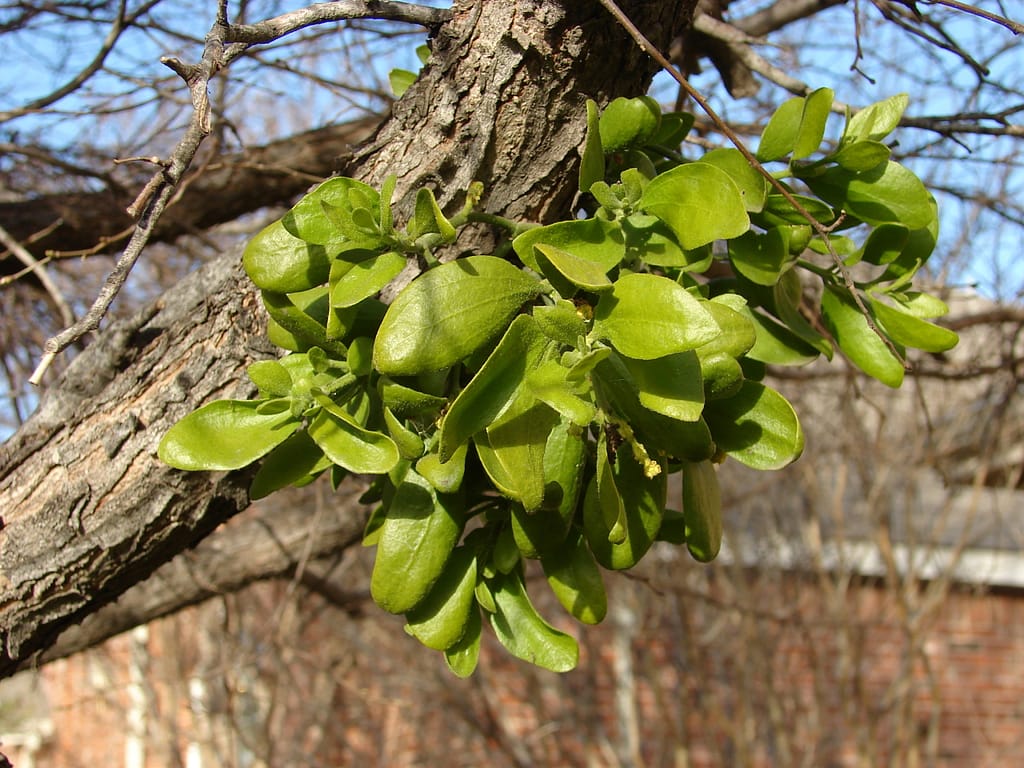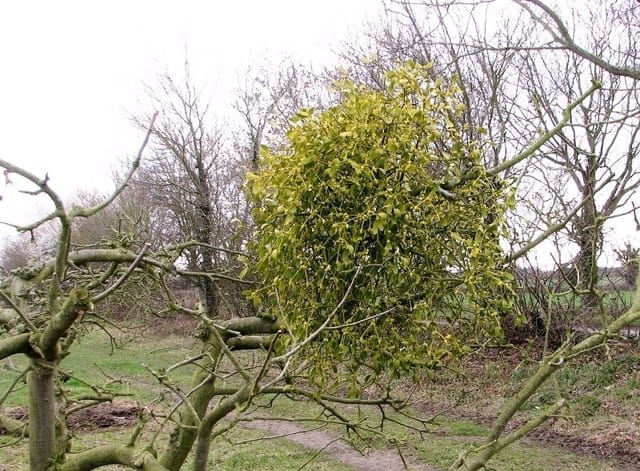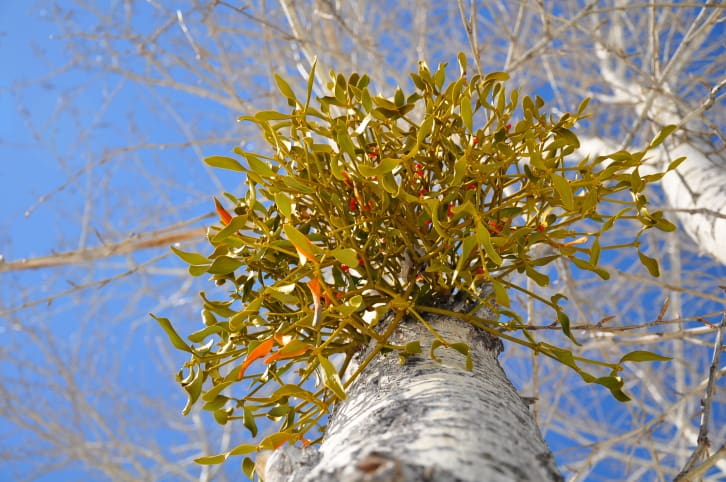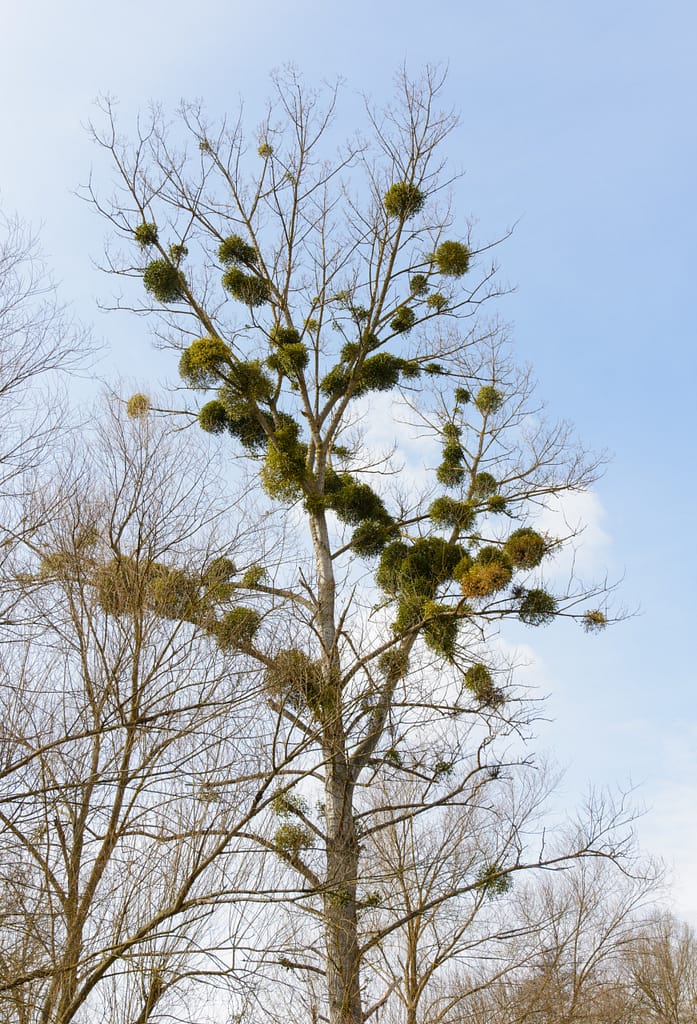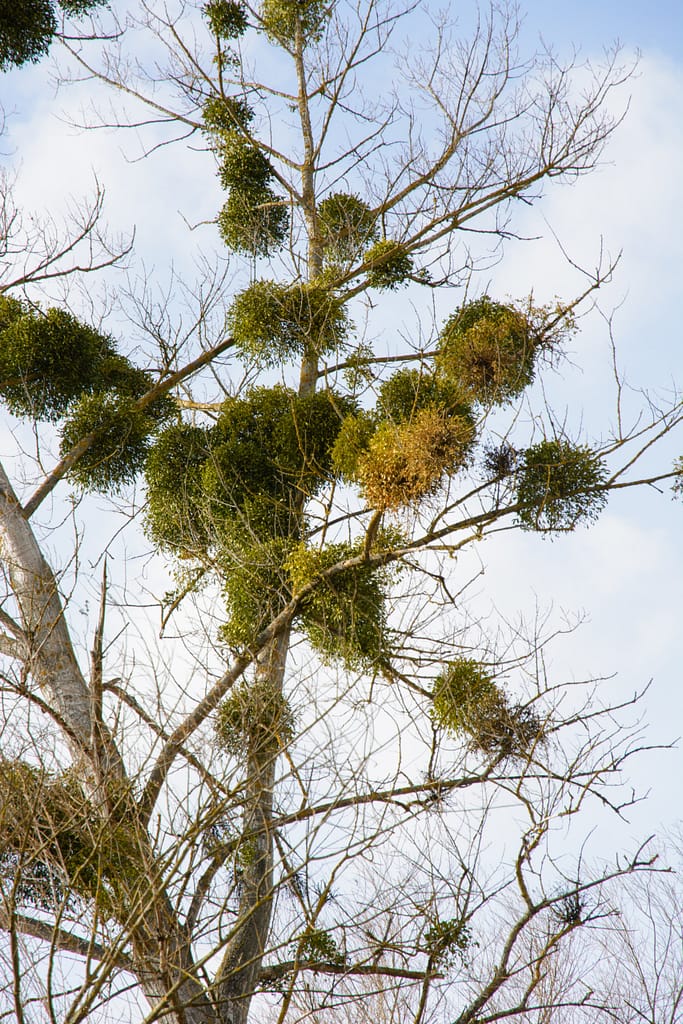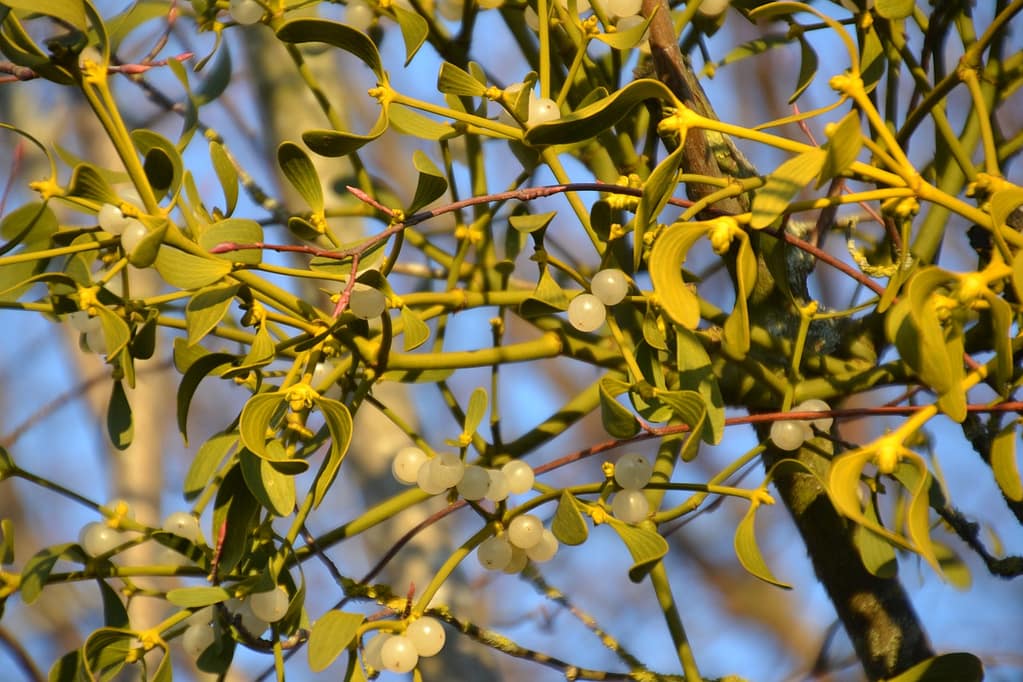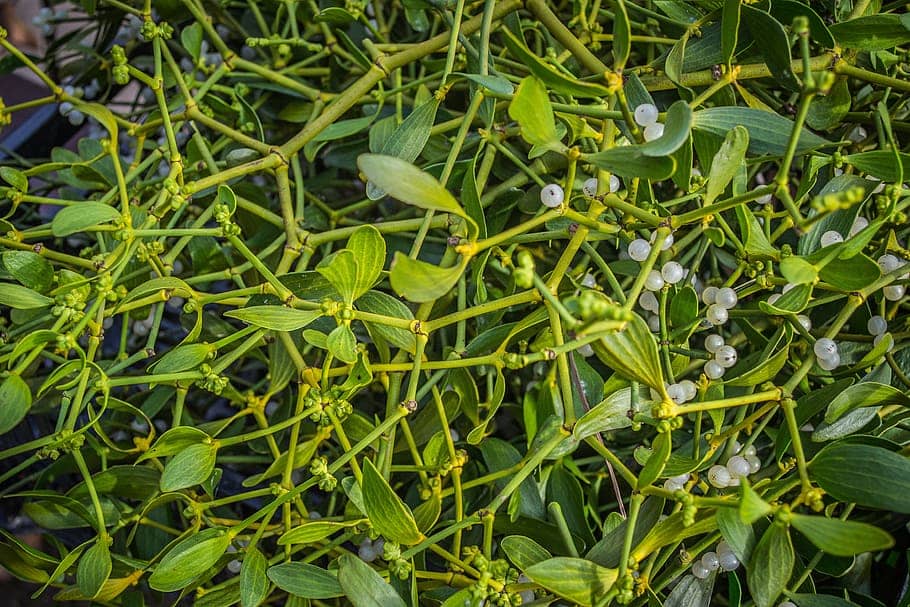What Is Mistletoe?
Mistletoe is an evergreen parasitic plant that grows on trees. They are evergreen, which makes them highly visible in the Winter on deciduous trees, and feed on the water-conducting tissue inside the tree. The more common species, Phoradendron macrophyllum, is what we commonly see on our landscape trees in the urban environment.
Symptoms and Identification of Mistletoe
Mistletoe is oval shaped, light green, and can grow to be up to 2′ or more in diameter. From October to December they will produce small, white, sticky berries. As mistletoe is evergreen, you can easily see clumps of it on deciduous trees in the Winter.
Some species that are particularly susceptible to mistletoe are:
- Alder
- Aristocrat Flowering Pear (Different from Bradford Flowering Pear)
- Ash
- Birch
- Box Elder
- Cottonwood
- Locust (Black Locust, Purple Robe Locust, Honey Locust, etc.)
Other evergreens and maples can be susceptible to other species in different areas, but we rarely deal with them in the high desert.
For images of trees with mistletoe scroll to the bottom for help in identifying if it is affecting your plant. If you have photos you’d like to add to the photos below you can send them to [email protected].
Life Cycle
Mistletoe is spread through the seed from bird excrement falling onto tree branches. The seeds stick tightly to branches and germinates there. Seeds from the new mistletoe plant can fall down to other branches below and spread the infection. Once infected, the mistletoe will send roots called haustoria inside the branch to extend further down the branch. Mistletoe infection typically starts high in the canopy as this is where birds will perch. It then falls and spreads throughout the tree
Management of Mistletoe
Taking care of mistletoe as soon as you can will greatly decrease the amount of work you need to do. If left to spread and grow out of control, it might necessitate drastic measures such as removing a significant amount of branches, or removing the tree as a whole.
Monitoring
The best way to find mistletoe is by noticing it in the Winter. During that time it is also ideal to prune out the infected area if that is the preferred way to deal with your particular infection.
Cultural Control
The best way to prevent mistletoe from becoming an issue is to plant resistant varieties, especially where there are other large infestations of mistletoe on other trees (see Mojave River for our local area). Outside of that everything else is controlling and containing. Resistant varieties include:
- Bradford Pear
- Chinese Pistache
- Crape Myrtle
- Eucalyptus
- Ginkgo
- Goldenrain Tree
- Liquidambar (Sweet Gum)
- Sycamore
- Redwood
- Cedar
As far as Eradicating it from a single tree, there are several options:
- Pruning the infected branch(es)
- Cutting it off flush and wrapping the branch
- Cutting off the mistletoe yearly (better than nothing)
When pruning out infected branches, you will need to prune 12″-18″ below the infection if possible, as this will eliminate the haustoria inside the branch.
Once you have cut the mistletoe off, you will need to wrap the branch with black polyethylene to prevent light from penetrating. Mistletoe will not resprout without access to light. Tape or twine can help to hold the plastic in place. Be sure to not wrap the plastic too tight as it can damage the branch. You may need to reapply if the plastic is torn or falls off, and keep it on for 2-3 years before you are safe to remove it without potential for resprouting.
Chemical Control
Ethephon can be used as a control for mistletoe, but the results vary with different amounts of active ingredient. It has been said that at 10% active ingredient it effectively controls regrowth of treated stubs. I have also read that it won’t completely control it, and that regrowth would generally occur requiring additional chemical treatments. Ideally it would be applied when daytime temperatures are above 65°F while also having no new leaves that have emerged. You only want to spray the mistletoe itself, so having additional leaves would interfere with the application.
Toxicity
As with almost all chemicals there is an associated toxicity rating for the active ingredients of different pesticides, fungicides, herbicides, and rodenticides. Here are a few places you can learn more about their toxicity with a table of their rating and what the rating means (first is the preferred):
http://pods.dasnr.okstate.edu/docushare/dsweb/Get/Document-3591/EPP-7457web.pdf
https://extension.psu.edu/toxicity-of-pesticides

